Forests continue conquest of countryside
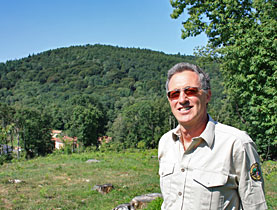
More and more of Switzerland is being reclaimed by forest. While this may appear to be a positive development, experts are concerned about biodiversity loss.
Around 31 per cent of the country’s surface area is blanketed by trees, and there has been an increase of nearly ten per cent in alpine areas since the mid 1990s.
This dramatic change to the landscape is most evident in the southern canton of Ticino – more than 50 per cent of its surface is now covered by forest.
The growth is a blessing for wild animals such as deer and boar, but larger forests also mean fewer habitats for many bird species and butterflies. And the more monotone the alpine landscape, the less attractive it is for holidaymakers in a country with a significant tourism industry.
“This hill was a giant potato field during the Second World War but today it’s only forest,” says Romano Berzaghi, head forester in Ticino’s Malcantone region, pointing to the slopes of the 931-metre-high Monte Monteggio.
Neutral Switzerland was isolated during the war. Food was scarce and so the country tried to grow all of its own crops. But today, only a few local inhabitants still make a living from farming. Most people have jobs in the nearby city of Lugano or the industrial area of Manno.
The forest in this part of the country is continuing to expand unabated across the hills and mountainsides. “In a few decades – also due to climate change – the forest will have reached the highest elevations,” Berzaghi says, looking at the mountain ridge connecting Monte Lema and Monte Tamaro, where pastures can still be seen.
Trees now dominate the slopes where once cows, goats and sheep grazed. In the Onsernone valley, west of Locarno, the forest has taken over practically the entire area. “The villages there are surrounded by forest,” says Andreas Lack from the Swiss Foundation for Landscape Protection.
No turning back
After farming ceases, bushes and shrubs consume pastures. Trees come next. And once the vegetation has reached this stage, there is no turning back. According to Swiss law, forests cannot be cleared.
The law came into being to prevent a repeat of the widespread deforestation of mountain slopes in the 19th century due to the high demand for timber, which was used mostly as fuel.
The bare hills often led to catastrophic flooding.
Measures to protect forests were first introduced in 1876. At the same time, trees as a natural resource became less important. Forests have been expanding ever since.
“The problem of larger forests is really an agricultural or land-use planning issue; the law on forests cannot change much,” says Daniel Landolt, a forestry specialist at the Federal Environment Office.
Landolt argues that farmers and landowners must be encouraged to continue grazing their livestock on mountain pastures.
Chestnut orchards
“We’re concerned by the spread of the forest but can’t do much about it,” believes Roland David, Ticino’s head forester. In Malcantone, the authorities have been attempting to plant chestnut orchards to stop the trees in their tracks.
A citizen’s committee in the village of Cademario is funding the replanting of a chestnut orchard. Part of a forest has had to be cleared, and to keep other trees from shooting up, a farmer is paid to graze his sheep. “Tourists and locals really appreciate the orchard,” says Rudy Vanetta, president of the committee.
But these are complex and expensive projects.
Another way of keeping the forest in check is to increase timber quotas. Currently, around 60,000 cubic metres of wood is harvested in Ticino each year. The canton has plans to raise this to 150,000 cubic metres in ten years time.
This figure goes together with a rise in demand for wood as a local and renewable source of energy. Concerns about a repeat of the deforestation seen in the 19th century are unjustified, according to David, who says 500,000 cubic metres of wood grows each year.
The expansion of Swiss forests is also under scrutiny at the federal level. A parliamentary commission responsible for environmental, land use and energy issues is calling for the introduction of new measures to halt uncontrolled growth.
The new regulations would not reduce the total area covered by forest, but would permit the clearing of trees in overgrown areas.
Gerhard Lob in Cademario, swissinfo.ch (adapted from German by Dale Bechtel)
Swiss policy seems contradictory. On one hand, forests are proliferating. On the other hand, more and more forested areas are coming under protection.
The idea behind this policy is to prevent rising timber demand from exploiting wooded areas left untouched for decades.
Switzerland has set aside around 800 wooded areas as reserves. Most are zones where economic activity is forbidden. A few received their special status in order to preserve threatened species.
Most of the reserves are only a few hectares in size. In total, they account for 3.2 per cent of all forested areas, which is small on a European scale. The authorities want to increase the figure to ten per cent by 2030.
The Swiss timber sector was for many years an industry in decline, but has benefitted from rising demand for wood since 2003.
Around 5.5 million square metres of wood is harvested each year. This represents about 80 per cent of the amount of wood that is naturally replenished annually.
Spruce and fir account for 95 per cent of the wood processed at Swiss sawmills. In 2008, 406,000 square metres of processed softwood was exported abroad. Switzerland imported 122,000 square metres.
Around 75,000 people are employed in the Swiss timber industry.

In compliance with the JTI standards
More: SWI swissinfo.ch certified by the Journalism Trust Initiative

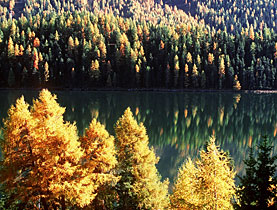
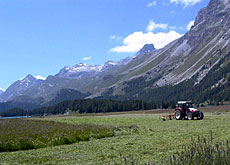
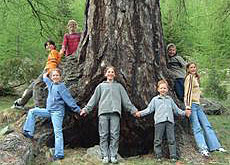
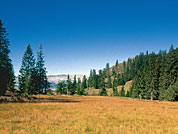
You can find an overview of ongoing debates with our journalists here. Please join us!
If you want to start a conversation about a topic raised in this article or want to report factual errors, email us at english@swissinfo.ch.